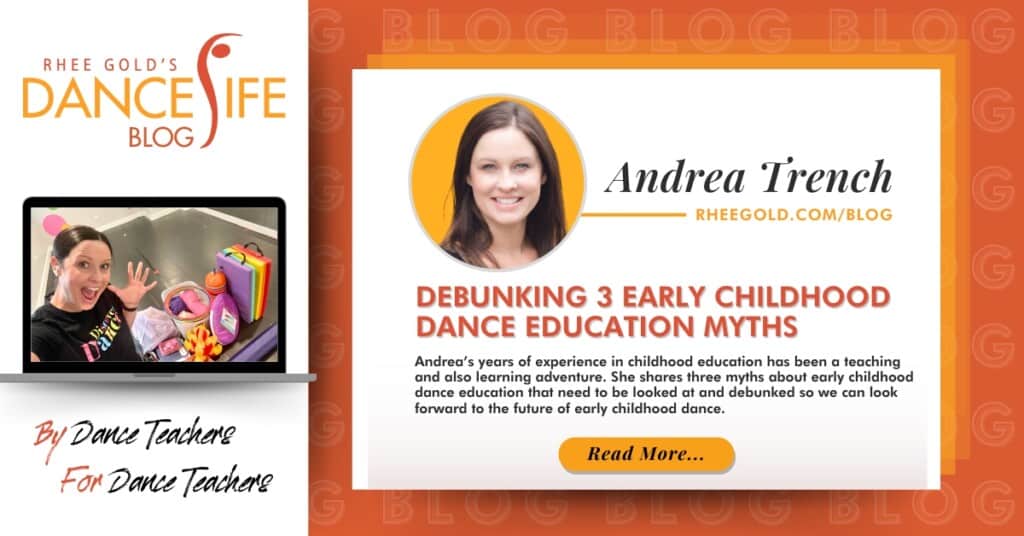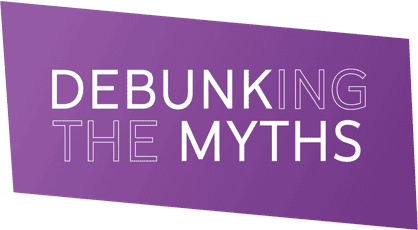Debunking 3 Early Childhood Dance Education Myths

Before we head into the new dance season, I think it’s time (or, shall I say, long overdue??) to debunk these myths about early childhood dance education.
Myth #1: Your Youngest and Newest Teachers Should Teach Your Youngest and Newest Dancers
Truth: The early years are a critical period of development, laying the foundation for the rest of a child's life. That's a huge responsibility! And, ask any teacher, new or experienced, and they will tell you these are the most challenging classes to teach. Teachers who have studied child development, understand how to meet the needs of the young child, and are open and eager to continue studying the ever-expanding research on best practices for teaching the early years, should teach the youngest students.
Dance can play a significant role in a child's development WHEN classes are developmentally appropriate and adhere to the highest standards of early childhood dance education. When programs fall short of these standards, they do a disservice to young children and their families. Thankfully, there are many resources available for continued education.
Bottom line, anyone can teach these classes… with the proper training, continued education, and a deep love for children and their development.
Myth #2: Early Childhood Dance Education (ECDE) isn’t “Real” Dance
Truth: It’s easy for adults to look upon an early childhood dance class and think it’s just fluff and fairytales. Afterall, we spend much of our class time playing, giggling, and swimming like little fish. When people question the purpose and benefits of dance for young children, they often lack an understanding of child development and early childhood dance education. This is understandable, as early childhood dance educators dedicate many hours to studying these subjects, curating perfect lessons, assessing and adapting in real-time, and teaching not just dance skills but also foundational and conceptual skills. We are creating both artists and athletes, while also supporting children's development during a crucial period of brain growth. In a brief 30-45 minute weekly class, we have serious work to accomplish! This is why it's essential to first, ensure that classes are not just fluff and fairytales, but rooted in solid educational principles, and then to educate dance families on the reasons behind your methodology. If you're unsure why you're doing certain activities in your classes, it's time to evaluate your curriculum to ensure it is developmentally appropriate and that you understand its purpose. Early childhood dance education is serious business and 100% real dance. We have research supporting how movement and music aid brain development. Let's share that information widely and often!
Myth #3: You Need to Invest in a Curriculum.
Truth: While done-for-you curriculums can provide great ideas, tips, and tricks, the best education for your studio and students comes from you, the educator.
No single done-for-you package will perfectly meet the needs of you and your students. Developing curriculum is part of the dance teacher journey. When you buy someone else’s, you're purchasing a piece of their journey, shaped by their experiences and educational path. Only you know the unique educational path you have created at your studio. Only you can connect with your students, observe their interest, and evaluate their unique needs. This information is crucial when it comes to the success of any curriculum. Fortunately, there are resources and opportunities for professional development and curriculum building. By investing time and effort into creating your own, you ensure that your students will thrive on the dance journey you have created for them as their educator.
Andrea Trench is dedicated to helping dance teachers create and deliver content that is research-based and developmentally appropriate for children under the age of 6. Her primary focus is classroom management, conceptual teaching, and foundational movement skill development in early childhood dance education. In addition, Andrea uses her 12 years of experience as a partner in a dance studio to inspire, equip, and empower educators.









Love Rhee wish we could have a workshop in South Africa